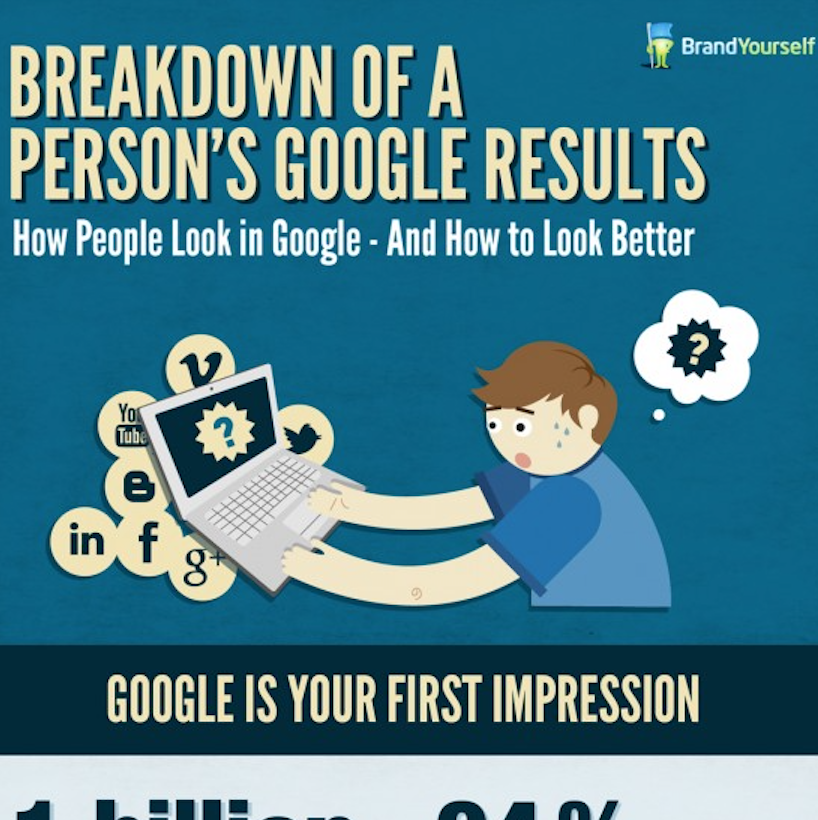
Want to Look Better in Google? Our Data Shows You the Best Ways [our first infographic]
At BrandYourself, our goal is give our users and readers everything they need to put their best foot forward in Google. Since we track the Google results of over 130K users we were able to analyze millions of results and found some really insightful information.
Want to look better in Google? Think twice about building your personal website on WordPress.
- Bad First Impression: 1.5 Billion names are Searched everyday in Goolge but people generally don’t look great on their first page
- If you want to look better, you need to choose your profiles wisely: For example, LinkedIn is the best social network for rankings, while WordPress is the highest ranking personal site builder. Even more interesting, popular pages like about.me really have trouble ranking high.
- BrandYourself is effective: To date, we have helped people raise their favorite profiles over 250K positions higher in Google. People can expect to raise a profile over 20 positions, or 2 whole pages, by using our software. We are very proud of this.
We know not everyone loves looking at data as much as we do, so we put it in fun infographic form so you can enjoy it too. Let us know what you think! When you’re done, make sure to look at our online reputation management guide as well. Both of these together will give you a complete understanding how to look better in Google.


I think the Zerply results are interesting. I don’t know, but about.me for whatever reason, and maybe it’s the TLD they are using, does Google discount the .me domains a bit maybe?
I think it’s a mixture of the .me not quite being as valued, and also the way in which people use about.me. Generally speaking, people write a very short blurb, if anything at all, and the only content being featured on the page is duplicated from other networks. In Google’s eyes that’s not a great resutls
Contrast that with LinkedIn, people generally take the time to fill EVERYTHING out, making it a really relevant result
I just read the same infograhic and Linkedin is the most important social media platform that we have to get it.
Very useful information I joined linkedin but never thought it is so important to use it properly to brand myself and get fair resutls from it. Thanks Indeed for your this post
Thanks! Glad you liked it!
Thank you Patrick for posting such a useful article. Linked in is indeed the best social media site; I just love working in Linked in , it helps me to built a good professional platform.
“user wordpress it ranks higher including other blogs such as tumblr and blogger”. Do you have any solid proof on that?
Thanks for sharing, putting yourself ahead of your competition is key in this poor economy!
I am really struggling as I have the same as a dead artist who has lots written about her by lots of people, I Have tried all the boost techniques for links but still only managed to get my twitter intermittently onto the first page – help!